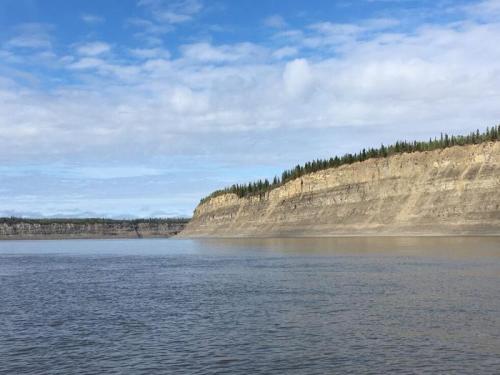 For decades rock weathering has been thought to be a net sink in carbon budget models.
For decades rock weathering has been thought to be a net sink in carbon budget models.
New research finds rock emissions are a large net source of CO2 into the atmosphere.
A few years ago Buesseler et al., 2020 discovered that all of the climate modelers’ previous estimates of global ocean carbon uptake were substantially wrong because they were measuring from the fixed “canonical fixed 150-m depth.” [emphasis, links added]
The alleged new-and-improved way to assess carbon uptake is from much shallower depths: the euphotic zone (Ez).
This is the section of the upper ocean layer that sunlight is able to penetrate, and it can “vary from less than 20 m to almost 200 m” in depth.
When the variable Ez depth is used to estimate carbon absorption versus export, the absorption estimate changes by more than a factor of two, from 2.8 petagrams of carbon (PgC) per year to 5.7.
Now, new research reverses the decades-long assumption that rocks exposed to the air absorb CO2 from the atmosphere.
Instead, weather-exposed rocks “act as a large CO2 source,” as they release “as much carbon dioxide as the world’s volcanoes.”
Rock weathering as a net source of CO2 is thus “not captured in climate models.”

About five years ago it was discovered that modeled estimates of CO2 emissions from volcanoes are 10 times smaller than actual measurements indicate (Illyinskaya et al., 2018).
Another 2018 study (Gray et al., with a Physics Today press release) estimated the carbon uptake for the Southern Ocean.
But instead of using the traditional ship-based measurement, the authors utilized biochemical floats. The results upended decades of modeling.
Instead of absorbing close to one petagram of carbon (PgC) per year, the Southern Ocean is barely even a carbon sink at all – just 0.08 PgC of yearly absorption (with a ~14 times larger uncertainty range, ±0.55 PgC/year).
Large regions of the Southern Ocean near Antarctica are now considered a net source of CO2 to the atmosphere.
In other words, when estimates are float-based rather than ship-based, one estimate can be more than 10 times different than another.
These wildly varying results and consequent large uncertainties underscore just how guess-based carbon-budget-modeled estimates are.
Read more at No Tricks Zone



















You are so interesting! I don’t suppose I’ve read anything
like this before. So good to find somebody with original thoughts on this issue.
Seriously.. many thanks for starting this up. This site is one thing that’s needed on the internet, someone with a
bit of originality!
Its like you read my mind! You seem to know so much about this, like you wrote the book in it or something.
I think that you could do with a few pics to drive the message
home a bit, but other than that, this is great blog.
A great read. I will certainly be back.
Hello! I’ve been reading your site for a long time now and finally got the bravery to go ahead and
give you a shout out from Lubbock Tx! Just wanted to say keep up the excellent
work!
I use Google’s Blogspot.com for a free and easy to use blog. My climate and energy blog has had over 639,000 page views since it was launched in 2016, including over 89,000 page views so far this year. A more complex blog can use WordPress, rather than Blogspot.com
Mr. Richard is a fool who publishes any “study” that claims CO2 emissions ae not very important, or not important at all.
Nature’s CO2 process is extremely slow and could not possibly match the rapid addition of manmade CO2 since 1850, of about +250ppm, that caused a +140ppm increase of atmospheric CO2.
Nature absorbed much of the extra manmade CO2
Richard does not understand the simple process where nature is a NET CO2 absorber.
I do agree that nature is a significant CO2 absorber. You criticize the article saying the process was slow. However, the article used standard measurement time scales in the data it gave. “2.8 petagrams per year, 0.08 PgC of yearly.” This is the same time scaled use to measure how much carbon dioxide of anthropological release into the atmosphere.
It is true that CO2 emissions are not important. At 420 ppm, carbon dioxide is beyond it saturation point and increasing the concentration will have little impact on warming.
The Earth Is Not Fragile and Nature is not Delicately Balanced as we have been told